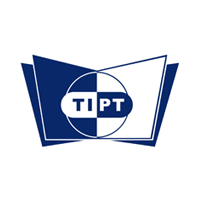 Many consumers rely on cough medicine for relief from various ailments, from asthma to respiratory infections to symptoms of lung disease. The market for these types of medications is valued at over USD$5 billion in the United States alone, making it a huge part of the pharmaceutical industry.
Many consumers rely on cough medicine for relief from various ailments, from asthma to respiratory infections to symptoms of lung disease. The market for these types of medications is valued at over USD$5 billion in the United States alone, making it a huge part of the pharmaceutical industry.
There are certain factors and components that quality control students should be aware of when assessing the safe manufacture and application of standard cough medicine. Read on to find out more.
Consumer Behavior and Pharmaceutical Quality Assurance
In their studies, pharmaceutical students are taught not only to develop and oversee methods that ensure control, reproducibility, and reliability in testing and manufacturing products, but also ensure that these products meet consumer safety guidelines.
While a pharmaceutical student will learn all about the complexities involved in the manufacturing process of over-the-counter (OTC) cough medicine, this does not necessarily hold true for the average consumer.

Generally, many patients who use cough medicine for respiratory relief do not consider their previous prescription history or health conditions, as well as other OTC drugs they may be using in conjunction to combat their cough.
In order to counter any potential misuse or misappropriation, as well as ensure pharmaceutical quality assurance and quality control, professionals need to be cautious in their assessment of cough medicine production, as well as properly regulating the active ingredients to minimize potential risks. Ensuring clear and transparent labeling of products to advise of any special considerations is also crucial.
Ensuring Pharmaceutical Quality Control When Developing Cough Medicine
Students in quality control courses need to be attentive and careful when sourcing and manufacturing any new product in order to uphold ethical and practical standards. Just as the average consumer may be unaware of the dangers and side effects of cough medicine, they also may lack the ability to differentiate between effective and ineffective methods of treating their cough, especially when it comes to home remedies and non-traditional or homeopathic methods.

The independent pursuit of home remedies further complicates the process of ensuring that proper treatment reaches the consumer. For instance, concerned parents may look for alternative solutions to a mild respiratory infection outside of traditional cough medicine, as consumption for a child aged 6 years or younger is inadvisable.
A simple cough mixture approved for use by children includes natural ingredients such as glycerin, honey, and lemon. However, there is a possibility that parents who conduct independent research for home solutions are often misled or find incorrect advice on treatment for their child.
Misinformation can be a difficult obstacle to battle, especially in terms of quality assurance. Students can refer to standing policies and ethical considerations to indicate which commercial remedies are and are not harmful, as well as avoid any potentially problematic ingredients in the manufacturing and assessment of new products.
Interested in learning more about safe manufacturing procedures and pharmaceutical quality control?
For more information, contact the Toronto Institute of Pharmaceutical Technology.
